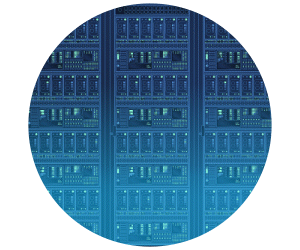Here are three areas to watch in the public sector as technology adoption moves into its next phase.
AI Will Be What’s Now and Next for State and Local Government
State and local agencies are leveraging AI to improve public service across a wide array of use cases in healthcare, transportation, the environment and benefits delivery. AI offers agencies untapped potential; moving forward, it will become foundational.
Agencies will be focused on AI use cases for ensuring efficiency in supply chain operations and delivering customer service despite workforce shortages. In addition, generative AI can help find answers in volumes of existing policies by summarizing large documents or suggesting content for review. Generative AI is undoubtedly here to stay, and agencies must learn to manage it.
LEARN MORE: Use cloud patterns to simplify and secure multicloud environments.
Increased AI Adoption Will Drive Greater Focus on Security
As new AI solutions are developed and deployed, state and local agencies will continue to focus on addressing the security risks that using such technologies can expose them to. There is no shortage of use cases for applying AI to business situations, but the insights are only as good as the data on which they are based. If the data is not clean and secure, the insights won’t be useful. And with cloud adoption still at a nascent stage across the public sector, security infrastructure is critical to keeping data safe.
Going forward, agencies will be focused on developing guardrails to protect information and services — and providing flexibility to allow future innovation. They will also work on their disaster recovery and resiliency plans to ensure systems can still operate in the event of a breach or cyberattack.
REVIEW: Three ways a managed service provider must support multicloud environments.
Interoperability Will Be Mission-Critical
Agencies have an increasingly wide range of computing technology to choose from: different types of CPUs, GPUs, custom chips for machine learning, quantum computers and much more. Choosing wisely can improve performance and reduce cost, but the complexity of managing workloads in data centers and in the cloud will continue to increase.
That’s why, as agencies shift to hybrid and multicloud architectures to support these new functions, they will continue have multiple easy-to-integrate platforms that make it simple to share data without loss of performance. Multicloud platforms that are secure, simple to use and tightly integrated will become the top choice for all public sector agencies.
There is no question that the public sector is under pressure to modernize while also keeping costs down. Constituent demands and expectations continue to expand. As we move into a new year, AI, cybersecurity and the cloud will serve as key differentiators and accelerators for government agencies that lead in digital transformation and set examples for the rest of the country in how to provide quality constituent services.











